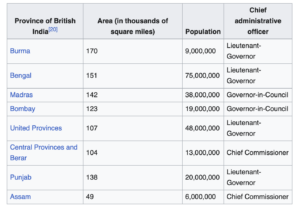Partition profoundly reshaped the subcontinent’s socio-political and cultural framework. Undivided India can be thought of five main regional quadrants—Northwest (“Punjab”), North (-“United Provinces”), Northeast (“Bengal”), Central (“Bombay & Central”), and South (“Madras Province”).

The Indo-Gangetic: Fragmented Identities
Partition shattered Punjab’s cultural and linguistic cohesion, severing ties from Delhi to Peshawar. The Indo-Gangetic heartland also suffered, with mass migrations and communal violence stifling regional solidarity. Bengal’s Eastern periphery faced similar disruptions, where linguistic fragmentation replaced unity, limiting potential cross-regional influence (that’s why the 1905 Partition of Bengal was met with such outcry by the Bhadralok).
Bengal and the Northeast: Diluted Cultural Power
The partition of Bengal broke the economic synergy between Kolkata and Dhaka. Dhaka’s industrial vibrance, lost to East Pakistan, left Bengal diminished, while the Seven Sisters languished in isolation. Greater Bengal, once poised to rival the Hindi Belt, was splintered, its cultural and linguistic reach thwarted by communal, geographical & international barriers.
Central India: Economic Ambitions Curtailed
Karachi’s loss as a trading hub possibly hindered the Old Bombay Presidency’s dynamism. A united Bombay-Karachi trade corridor could have created a thriving Gujarati-inflected economic epicenter, but Partition fractured these connections. While Mumbai emerged as the undisputed financial leader, the broader mercantile identity of the region remained somewhat divided though not as heavily as the North.
South India: Stability Amid Turmoil
In stark contrast, South India was insulated from Partition’s upheavals. With no large-scale migrations or communal strife, the Dravidian states preserved their linguistic and cultural integrity. Tamil Nadu, Karnataka, Andhra Pradesh, and Kerala channeled their stability into social reform, education, and economic progress. This stability mirrors Switzerland’s neutrality during the World Wars, fostering growth amid chaos (which is why Switzerland is possibly the wealthiest society on the planet albeit being somewhat agriculturally focussed).
The Linguistic Aftermath
Partition entrenched Hindustani dominance in three of the five quadrants (Northwest, North, and Central). Bengal, though resilient, lost its chance at Eastern linguistic hegemony, despite its historical precedent of elevating Bengali over Persian in the 15th century. In contrast, South India fiercely resisted the communal and cultural influence of the Hindustani language family, retaining its distinct, stark & very prosperous identity. It is Northerners who are flooding the South rather than vice versa.
The Cost of Partition
Partition homogenized diversity, replacing regional plurality with communal divides and Hindified most of the “Aryan” Subcontinent (Urdu did that for the Muslim populations ex Bengal). It erased organic cultural exchanges and amplified linguistic centralization, leaving the subcontinent much more fragmented than unified. South India’s success underscores the importance of cultural preservation and regional autonomy in navigating upheaval.
South India stands as the cornerstone of the modern Indian Republic, embodying uninterrupted cultural continuity, a secure pluralistic and Hindu identity, and a strong emphasis on technology and the sciences. Its stability and focus on progress make it a key driver of India’s advancements in various fields, from education to global tech leadership.